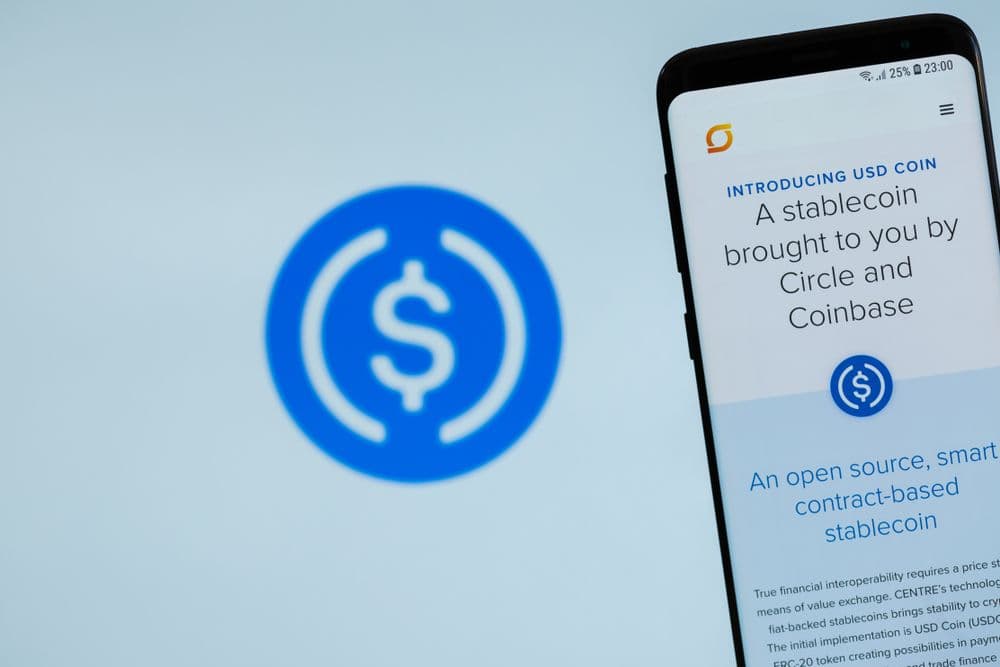The Circle Payment Network (CPN) announced the integration of its fourth fintech partner, RedotPay, on June 2. The partnership will allow RedotPay users to send funds directly to Brazilian bank accounts, with the money automatically converted into Brazilian Real upon arrival. This marks another milestone in the growing adoption of stablecoins, particularly Circle’s USDC, as a vital infrastructure for cross-border payments and remittances.
Launched in April 2025, the Circle Payment Network (CPN) aims to revolutionize the way money is transferred between financial institutions. By utilizing stablecoins like USDC, CPN provides a faster, more efficient solution to the challenges posed by traditional banking systems and legacy cross-border payment methods. The mainnet for CPN officially went live on May 21, 2025, with an initial wave of fintech companies adopting the technology, marking a crucial step forward for stablecoin-powered payments.
The network has quickly attracted significant attention, with four fintech companies - Conduit, RedotPay, Alfred Pay, and Tazapay - integrating CPN to support various aspects of international payment flows. These companies are pioneering the use of stablecoins in cross-border transactions, particularly for business payments, remittances, and other financial services. Each company is leveraging the Circle platform to optimize payment operations in different geographic markets.
The latest integration, announced by RedotPay on June 2, underscores the rapid adoption of CPN by key players in the fintech sector. RedotPay, a cross-border payments company, is now enabling its users to send USDC directly to Brazilian bank accounts, a critical development for both individuals and businesses that require efficient money transfers into Brazil.
What sets this integration apart is the automatic conversion of USDC into the Brazilian Real (BRL) upon arrival at the recipient’s account, a feature that enhances the convenience of cross-border payments and eliminates the complexities of manual conversions. By using CPN, RedotPay is not only improving transaction speed but also reducing costs associated with traditional international wire transfers, such as foreign exchange fees and intermediary charges.
This move comes at a time when Brazil is seeing increasing interest in digital currencies, with the adoption of stablecoins gaining momentum. For RedotPay, integrating Circle’s technology provides a unique value proposition by addressing the challenges of slow and costly international payments, particularly in regions like Latin America where traditional banking infrastructure is often lacking.
Expanding the CPN Ecosystem
Circle’s efforts to expand the reach of its payment network are evident in the partnerships it has secured so far. Conduit, another major fintech player, was one of the first to integrate CPN in May 2025. Conduit is using CPN to power fiat-to-USDC flows into Mexico, enabling businesses to move money across borders with minimal friction. The integration positions Conduit as a key player in the growing trend of stablecoin-based cross-border business payments.
Similarly, Tazapay, a cross-border payment solution, has integrated CPN to support fiat disbursements into Hong Kong, further expanding the geographic footprint of Circle’s stablecoin-powered network. Alfred Pay, which focuses on enabling stablecoin-to-fiat transfers via popular payment rails such as PIX and SPEI in Mexico and Brazil, is also leveraging CPN to enhance its service offerings.
These integrations collectively highlight the versatility of the Circle Payment Network, which is designed to facilitate payments across a range of financial systems, whether it be for individual remittances, business payments, or institutional transfers. By streamlining payments and automating fiat conversions, CPN is positioning itself as a significant alternative to traditional transfer networks.
As stablecoins gain broader acceptance, their use cases are expanding beyond the realm of cryptocurrencies. Companies like Stripe and Coinbase, for instance, have launched products that enable USDC transfers with automatic payouts in various fiat currencies, showcasing the growing demand for stablecoin-based payment systems.
Moreover, emerging fintech platforms such as Ramp Network, BVNK, Transak, and MoonPay are building infrastructure to support bank-to-bank and wallet-to-bank payments that utilize USDC, USDt, and other stablecoins. This proliferation of stablecoin-enabled services is accelerating the transformation of the payments industry, making it more inclusive, efficient, and accessible.
Traditional Financial Institutions Begin to Embrace Stablecoins
While fintech companies have been at the forefront of stablecoin adoption, traditional financial institutions are also starting to take notice. Legacy payment providers such as Visa and Mastercard have begun to facilitate stablecoin acceptance for merchants, offering cards linked to stablecoin balances for easier consumer transactions.
In addition, SWIFT, the global leader in traditional cross-border payments, is exploring ways to integrate stablecoins into its existing infrastructure. This move would allow SWIFT to leverage the speed and efficiency of stablecoins while maintaining its dominance in international transfers. The integration of stablecoins into SWIFT’s system could help bridge the gap between the traditional financial world and the emerging digital economy.
At the wholesale level, major banks such as JPMorgan and Santander are actively exploring the development and issuance of their own stablecoins. By launching their own digital currencies, these institutions aim to streamline payment processes and reduce reliance on third-party fintech providers. This move could lead to the creation of private digital currencies that cater specifically to institutional needs, further solidifying the role of stablecoins in the broader financial ecosystem.
The Future of Stablecoin-Powered Payments
As Circle continues to expand its Payment Network and more fintechs and financial institutions integrate stablecoins into their operations, the future of cross-border payments looks increasingly digital. The ability to send funds seamlessly across borders, with automatic fiat conversions and low transaction fees, is positioning stablecoins as a key pillar of the next generation of global payment systems.
For companies like RedotPay and others that have integrated CPN, the benefits of using stablecoins for cross-border payments are already clear. As the network expands and more regions embrace stablecoin infrastructure, the demand for faster, more cost-effective payment solutions will only continue to rise.
In conclusion, the Circle Payment Network’s growing list of integrations, coupled with the increasing acceptance of stablecoins by traditional financial institutions, signals a broader shift in the payments industry. By enabling faster, more transparent, and cost-effective transactions, Circle is helping to shape the future of global payments, one stablecoin-powered transfer at a time.

